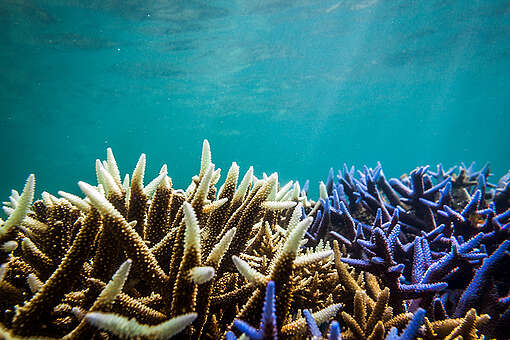Amsterdam, Netherlands – A new Greenpeace International report released today, In Hotter Water: How the Global Ocean Treaty can boost climate action, presents compelling evidence of the climate crisis’ disastrous impacts on the ocean and coastal communities.
The report summarises scientific findings over the last five years which raise the alarm about ocean warming, coral bleaching, shifting marine species distributions, sea ice loss, sea level rise and extreme weather events.[1] Also highlighting a recent study, the report warns that the oceans’ ability to absorb carbon dioxide may no longer be able to keep pace with human emissions.[2] All these changes have come at huge cost to the oceans themselves, and with profound consequences for billions of people worldwide.
Chris Thorne, Campaigner for Greenpeace UK, Protect the Oceans campaign said: “We must urgently take action and safeguard our best ally in the fight against climate change, by drastically reducing emissions, and by protecting 30% of the world’s ocean by 2030. The ocean supports all life on this planet, but as the climate crisis accelerates, the ocean’s ability to protect against its worst impacts, sustain coastal communities and support marine ecosystems is being damaged at an unprecedented scale.”
While the ocean and climate crises are worsening, governments have been dragging their feet on measures to effectively protect the oceans. To this day, less than 1% of the high seas – the largest habitat on Earth, comprising 64% of the world’s ocean – is fully or highly protected from human activities.
Chris Thorne added: “The Global Ocean Treaty can play a pivotal role in strengthening ocean resilience. It is the only tool we have that can protect 30% of the world’s ocean by 2030, in a network of ocean sanctuaries. Governments need to stop dragging their heels, sign it into law and get on with delivering their promise of protecting the ocean, before it’s too late”.
Alongside drastically reducing carbon emissions in line with the Paris Agreement as a matter of urgency, governments must ratify the Global Ocean Treaty, agreed upon by all governments in 2022, by the UN Ocean Conference, taking place in Nice, France, in June 2025.
ENDS
Notes:
Download the report: In Hotter Water: How the Global Ocean Treaty can boost climate action
Pictures from the report are available from the Greenpeace Media Library
At least 60 countries must ratify the Global Ocean Treaty by the UN Ocean Conference of the Parties (COP) in June 2025 for the agreement to enter into force 120 days later. After ratification, governments must continue to prioritise ocean protection through rapid and effective implementation of the Treaty.
[1] Key facts from the report include:
- Warming ocean waters mean the ocean is 1–2% less oxygenated than in the 1970s.
- The Arctic sea ice minimum extent in 2024 was the seventh-lowest on satellite record, and the 18 lowest annual minima have all occurred in the last 18 years.
- A global mass bleaching event began in 2023 – the second in 10 years – and by July 2024, 73% of the world’s corals had been exposed to enough heat to begin bleaching.
- So-called “once in a century” extreme sea level events are predicted to be 20–30 times more frequent, exposing one billion people to their effects.
- Sea levels are 21 cm higher than they were in 1900, and projected future ice loss from polar ice sheets and from glaciers in mountainous regions means that larger increases are expected by 2100 even under the lowest emissions scenario


